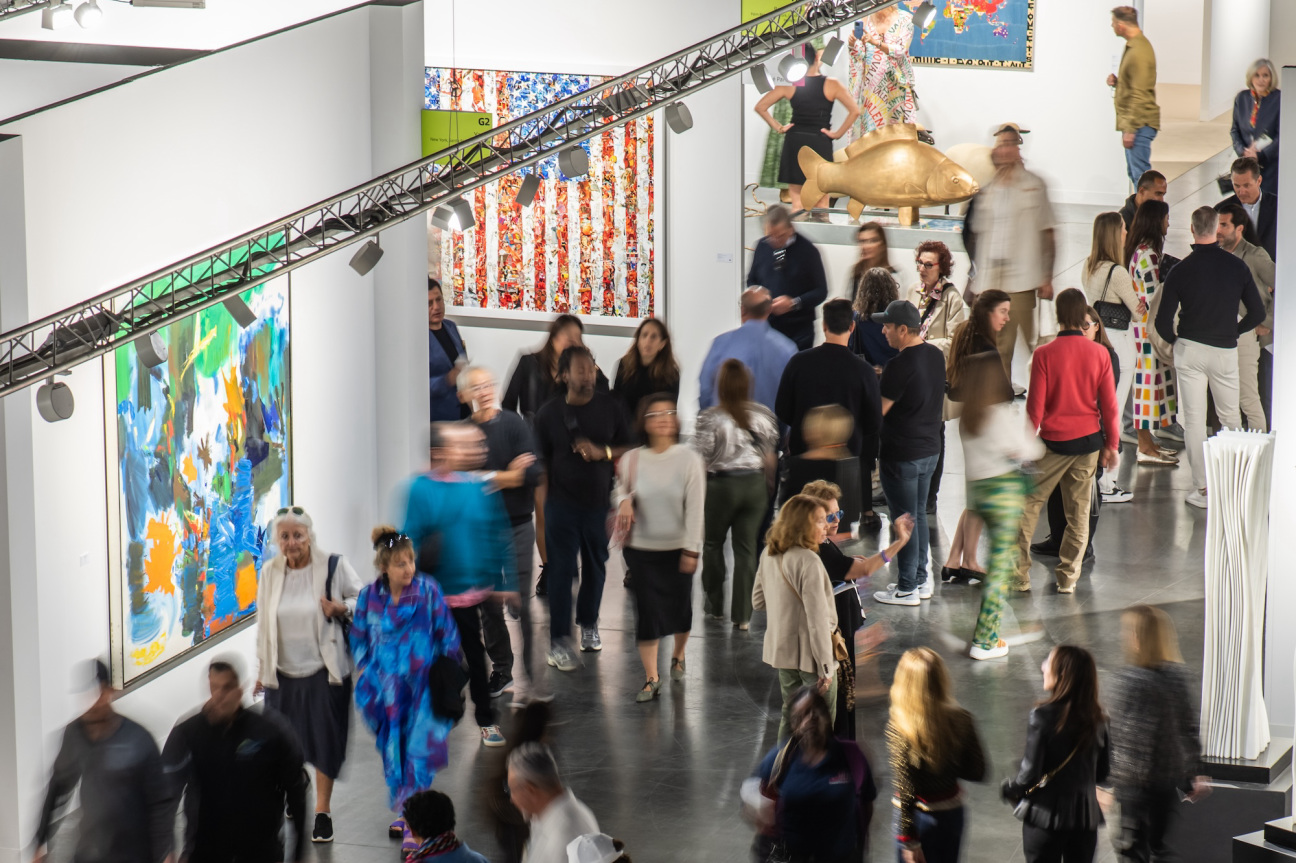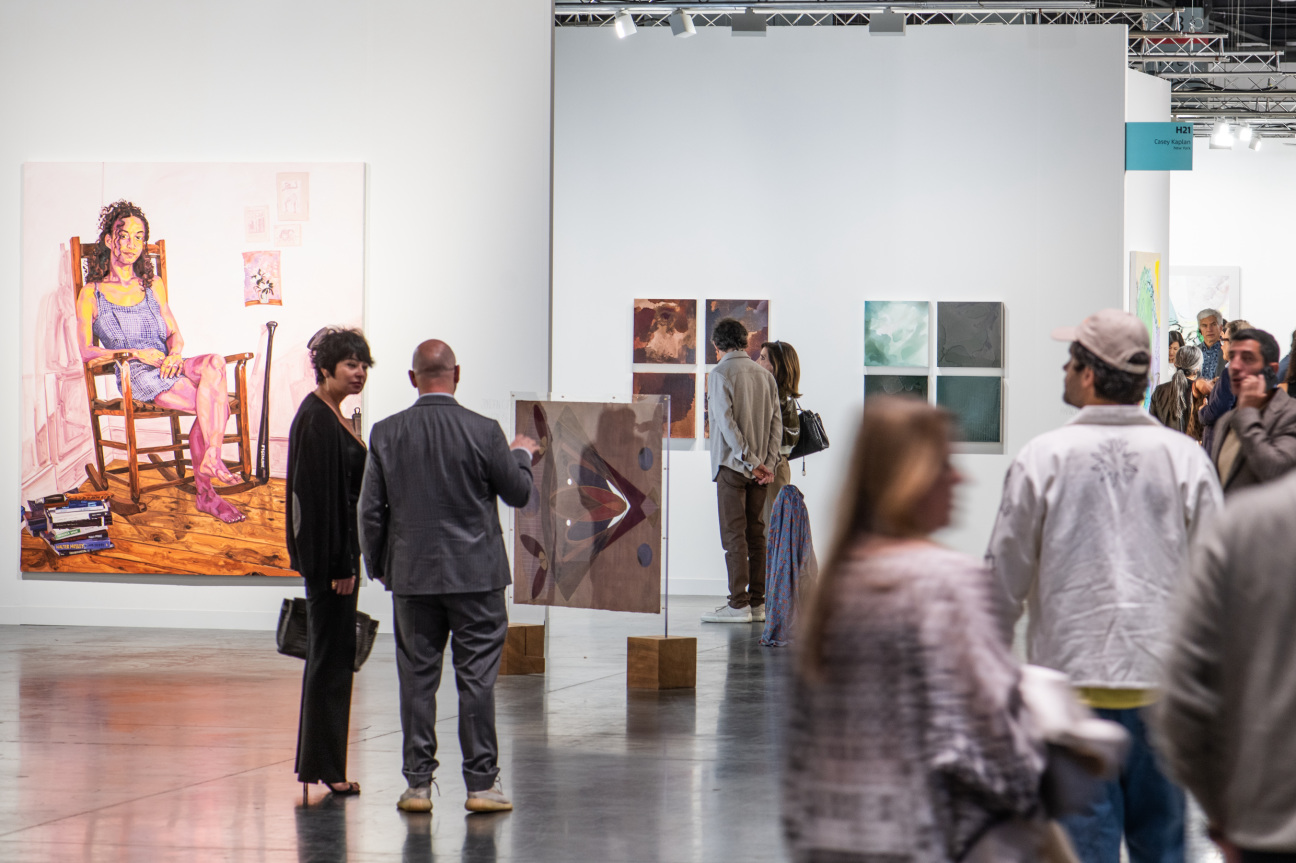
This is Street Smarts, a new column from art advisor Ralph DeLuca that offers art world veterans and newcomers alike a straight-talking, no-bullshit guide to the aloof and difficult-to-crack contemporary art market.
The title of this article will give the reader one of several reactions. A member of the general public or a novice art collector will be left scratching their head wondering, “What the frig does this mean, Ralph?” A more seasoned collector or art advisor is likely to respond: “Hell yes—it’s about time this shit is called out and stopped!” A gallery owner or director (sorry, guys) will think: “Oh no—please don’t go there. Talk about the presidential election, the stock market, falling art prices—anything but this.”
If you are a member of the first group, allow me to catch you up.
BOGO stands for “Buy One, Give One.” It’s a scenario where, in order to gain access to a coveted artist’s work in the primary market, a collector must agree to buy two of their pieces from the artist’s gallery and immediately donate one to a museum. This is one of my least favorite requests a gallery can make of me or my clients. But it has played a big role in the art world we operate in today and the trajectories of many young artists. During BOGO’s heyday in 2022, collectors enticed—or browbeaten—by gallerists regularly jumped over waitlists to donate one work and secure a second for themselves.
Who the hell would agree to this, you ask? Let me explain.
Imagine an artist—let’s call them Artist X—who has a huge waiting list and whose residentially-sized paintings sell for $75,000 on the primary market. When work from that same series ends up at auction (somehow, it always does), it fetches more than $200,000 because it’s next to impossible for most people to gain access through the gallery and everyone wants the same exact art at the same exact time.
Seizing this opportunity, Artist X and the galleries that represent them figure out a way to fast-track their path to museum acquisitions, which help ensure an artist’s long-term career viability and normally take years to materialize (if they ever do). They create a loophole in the system—and that loophole is called BOGO.
Let's look at the math.
The work of art costs $75,000. Since the collector is buying two, let’s double that ($150,000), add a 10 percent discount because of the museum donation, and you get a total cash outlay of $135,000—or $67,500 a pop.
If you are in a 35 percent tax bracket (which means you have a yearly income of approximately $243,725 to $609,350), you will get a tax write-off worth the purchase price, $67,500, for the artwork you immediately donate. In this case of a 35 percent marginal tax rate, claiming a deduction of $67,500 on your tax return saves you $23,625 (Tax Savings = Purchase Price of Artwork x Tax Rate). FYI, there is a much more tax effective way for collectors to do this—something I have my clients do whenever there is an art donation they decide to participate in—but that is something a great art advisor or tax consultant can tell you! In this scenario, the final total expenditure comes out to $111,375.
So wait, Ralph, you say, are you telling me I can get a painting worth more than $200,000 for almost half that amount and become a museum patron like Agnes Gund—all at the same time? Where do I sign up?
Well, before you break out your checkbook and run to the nearest gallery, let’s take a closer look at the upsides and downsides of BOGO.

The Upsides
Even if BOGO is a poor example of patronage, it still is patronage. Also, the gallery makes two sales of an artist’s work, helping sustain their operation. The museum donation can boost the artist’s career and international exposure. The artist and their reputation should be paramount—always. And, just to be clear, I am totally in support of artists’ work ending up in museum collections, where they will be displayed and appreciated for generations to come.
Now, if a curator from a well-respected museum identifies not only an artist, but a particular work by that artist that they would like to add to the museum’s collection, then facilitating a donation is clearly a good thing. I love supporting artists and museums, especially when I feel that I or my clients are actually helping build an artist’s career and supporting a worthy institution—rather than being forced to for primary access.
The Downsides
Far too often, BOGO is marketed to collectors as a form of financial arbitrage. Besides being a terrible way to get someone to buy art, this strategy only works as long as the auction price for a piece remains significantly higher than its primary market price. However, as we have seen in the slew of bearish articles on falling auction results—particularly for works by emerging artists—this isn’t always the case. To me, this doesn’t seem like a sustainable strategy to build long-term collectors, clients, or patrons.
I have also found that many of the “collectors” who participate in BOGO are flippers, speculators, or people who would never otherwise get primary access to in-demand works from these galleries. In some cases, this amounts to a kind of deal with the devil, and you could be damaging the artist’s market rather than helping their career by inadvertently aiding and abetting speculation. Regardless of BOGO helping place works in institutions, it only takes a few instances of speculators buying an artist’s work to flip for a higher price at auction to create a false market.
Most museums do not want to yet acquire work by young, untested artists—let alone pay the storage and preservation costs that come with these acquisitions. So in some cases, galleries or collectors must strong-arm a museum to take a donation of a work they did not pick out by an artist they may not even know or want in the collection. The museums that are most active in this BOGO crap tend to be regional institutions with far less cachet and foot traffic than the major museums in New York, Los Angeles, San Francisco, or Chicago. For smaller museums, accepting these unsolicited donations can help foster stronger relationships with patrons and major donors and encourages further contributions—often financial.
I’ve come across several instances where galleries are insisting on BOGO deals for multiple paintings by an artist, but no museum has agreed to accept the donations. Wouldn't it be better for both the artist and the gallery to have two trusted collectors owning, enjoying, and talking about the works? I am sympathetic to the galleries who are trying to honor the artist’s request to place their works in more museums, but I believe there are more strategic, long-term ways to achieve this goal. Over time, as the artist’s career develops, museums may naturally come to recognize the value of their work.
In “favorable” BOGO outcomes, if the artist is lucky, the work will be shown for one month every 20 years. Most museums only show 3 percent of their collections, and the works that museums don’t actively want are less likely to see the light of day. More often than not, they will be stuck in a giant storage warehouse akin to the final scene of Raiders of the Lost Ark.
I also implore the galleries and artists to look more carefully at the person getting the “buy one” portion of this BOGO transaction. If this is not a person you would normally want to give primary access to because they have an unknown or unsavory reputation in the art world, do not do the deal. A BOGO is only as good as the worst person getting one!
DeLuca’s Definitions: An Art-World Glossary
For definitions of “primary market,” “secondary market,” and “flipper,” see my previous column.
Arbitrage
Trading that exploits the tiny differences in price between identical or similar assets in two or more markets. The arbitrage trader buys the asset in one market and sells it in the other market at the same time to pocket the difference between the two prices.
BOGO
“Buy One, Give One.” It’s a scenario where, in order to gain access to a coveted artist’s work, a collector must agree to buy two of their pieces and immediately donate one to a museum.
Primary Access
The ability to buy a new work from a sought-after artist directly from their gallery. While most industries are happy to sell to anyone with the money to buy, the art market is different—especially when there are more prospective buyers than there are artworks.
Speculation
Speculation in art refers to predicting the future value of an artwork. “Speculators” may collectively assume works by an emerging artist will appreciate in value and begin buying them at higher and higher prices. This creates a market bubble, where prices are disconnected from actual demand. When the speculation proves unfounded, the bubble bursts and collectors are left with overvalued works. Even though art is a financial asset, I do not believe young artists should be bought and sold like penny stocks.
Speculators
Much like their unsavory counterpart, flippers, speculators are seen as antagonistic participants in the art market. While flippers can be collectors who purchased a work with good intentions but then sold it quickly for a profit, speculators purchase works with the sole intention of making a profit. Both erode trust in the art world.










 in your life?
in your life?

